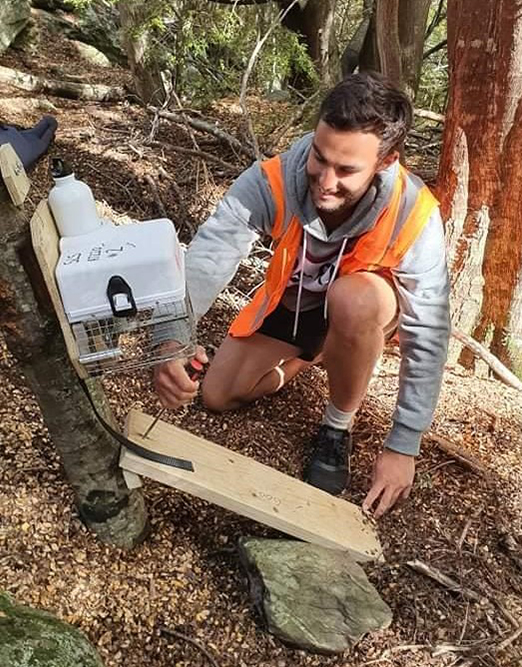Photo Credit: Southern Lakes Sanctuary
Protecting biodiversity: A case study in Southern Lakes Sanctuary
2022 CMP Photo Story Competition Honorable Mention
by Southern Lakes Sanctuary, New Zealand

The Southern Lakes Sanctuary contains a diverse range of indigenous fauna including alpine species, forest birds, braided river and wetland birds, bats and a high diversity of lizards including over 30 species threatened with extinction. The Southern Lakes Sanctuary will endeavor to conserve and restore ecosystems and build resilience in wildlife populations including the nationally threatened whio (blue duck).

The biodiversity of the region is of global significance including the kea which is nationally endangered.

Te Wahipounamu – South West New Zealand, part of which lies within the Southern Lakes Sanctuary, has been recognized for its global significance with UNESCO World Heritage status. The Southern Lakes Sanctuary is a landscape scale conservation project that unites the work of six major conservation groups focused on a long-term goal of eradicating introduced predators from the region.

Introduced pest or predatory species threaten the health of our native ecosystems. They can cause catastrophic effects on the environment, including preying on and competing with native birds, reptiles and invertebrates. Our primary problem species are mustelids (ferrets, stoats and weasels), rats, possums, hedgehogs, mice and feral cats.

The Southern Lakes Sanctuary project uses international best practice for systematic planning, implementation and monitoring of project activities, including the first extensive use in New Zealand, of the Protected Landscape approach and the Conservation Standards adaptive management planning tool. We held a 5-day Conservation Standards workshop in May 2022 with staff, partner groups, conservation groups, district and regional council and the Department of Conservation.

Conservation Standards workshop attendees. We will be working through the Conservation Standards over the coming months.

Southern Lakes Sanctuary focuses on best practice and undertakes monitoring (predator and ecological) prior to, during and post predator control work.

Southern Lakes Sanctuary are looking for ways to improve monitoring and staff recently completed training in SMART (Spatial Monitoring and Reporting Tool) which is a tool to collect, measure and evaluate data to improve the effectiveness of conservation efforts.

A primary focus is pest and predator trapping and we are looking to push the boundaries of current eradication practice in New Zealand.

We are focused on landscape-scale predator control, where core areas are intensively trapped and buffered, and corridors are established between these core areas. This involves making, installing and checking a large number of traps to achieve our goal of a Southern Lakes Sanctuary of spectacular mountains, lakes and rivers, with thriving ecosystems and abundant wildlife enjoyed by people who respect this whenua puiaki.
Learn more about the winners in our 2022 photo story competition here.
Download CS
The Conservation Standards is the product of inputs, field tests, and discussions among members of the Conservation Measures Partnership (CMP), which has final editorial authority over the Conservation Standards. Substantial input was also provided by members of the Conservation Coaches Network (CCNet) and other CMP partners.
Photo Credit: Felix Cybulla
Support CS
The biodiversity conservation community is tackling large, complex, and urgent environmental problems where the stakes are high. However, we don’t have a fully functional system to assess the effectiveness of our actions. Without more rigorous measurement of effectiveness and disciplined recording of our efforts, we cannot know or demonstrate that we are achieving desired results.
Photo Credit: Felix Cybulla
Our Collaborators
Every organization, agency, project, and individual has its own preferred set of terms. There is no right answer – the most important thing is that the members of your project team and the people with whom you work have a clear and common understanding of whatever terms you choose to use.
Photo Credit: Chris Scarffe
Contact Us
To inquire about supporting Conservation Standards (CS) or for general inquiries, please contact us at CMPinfo@ConservationMeasures.org
Photo Credit: Nature Conservancy of Canada
